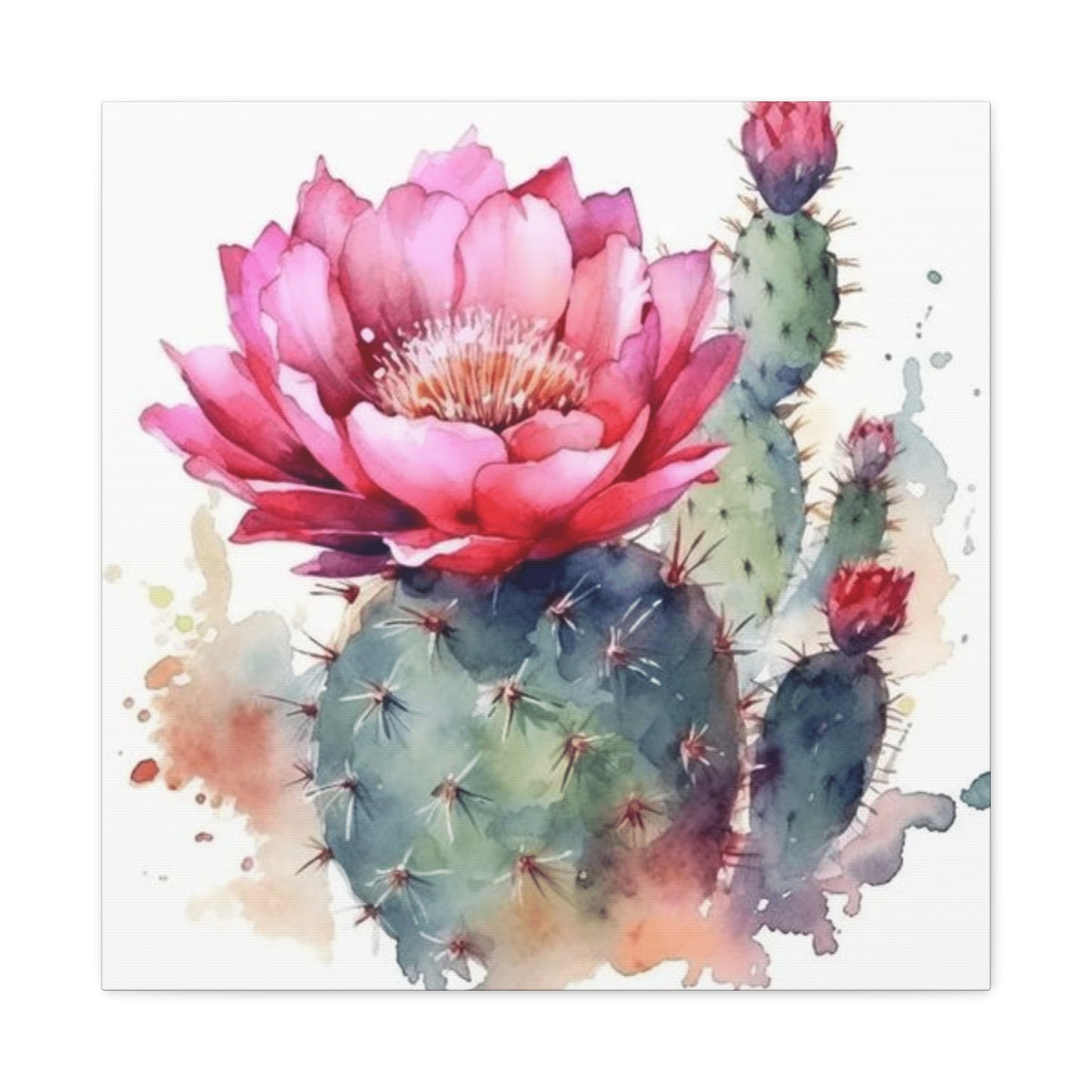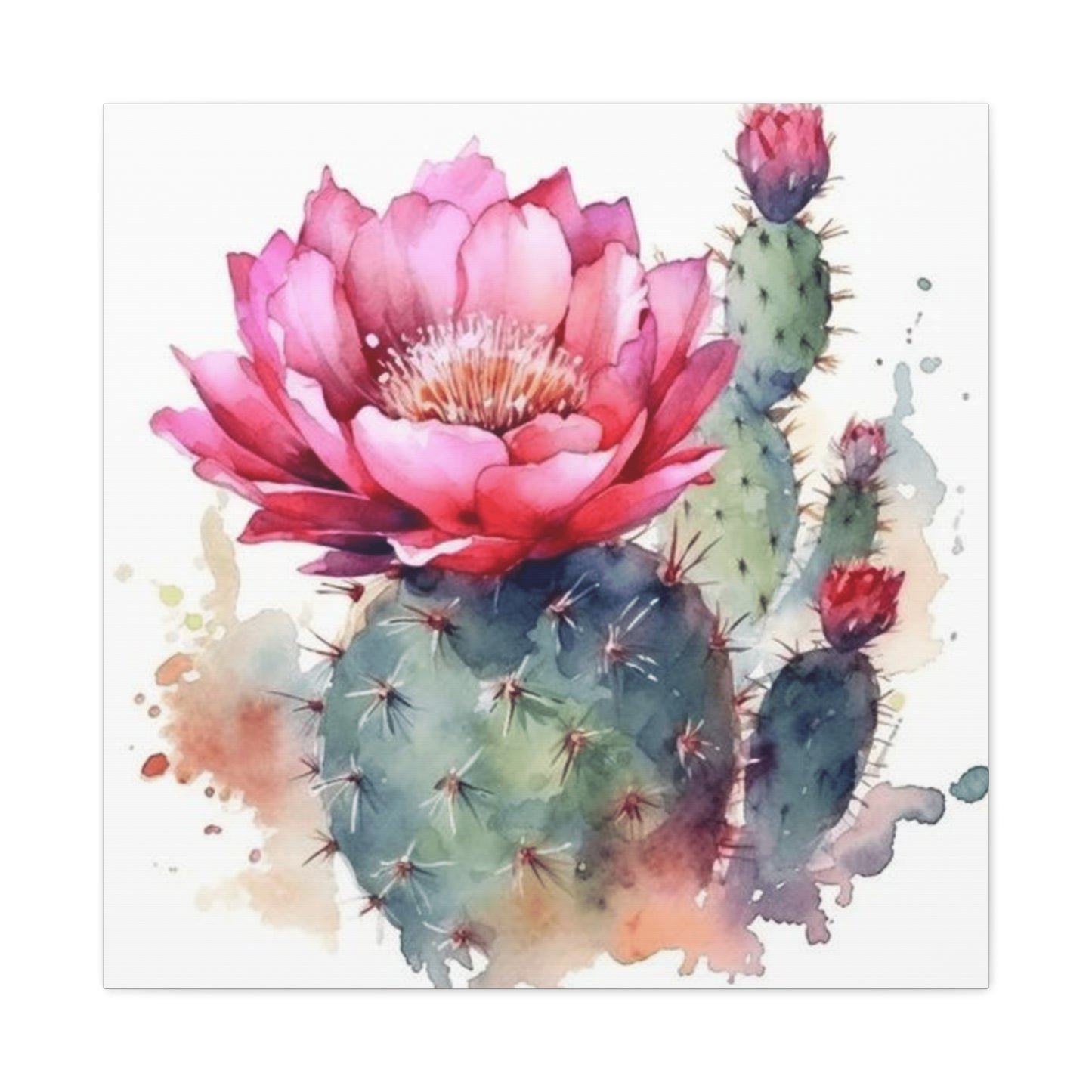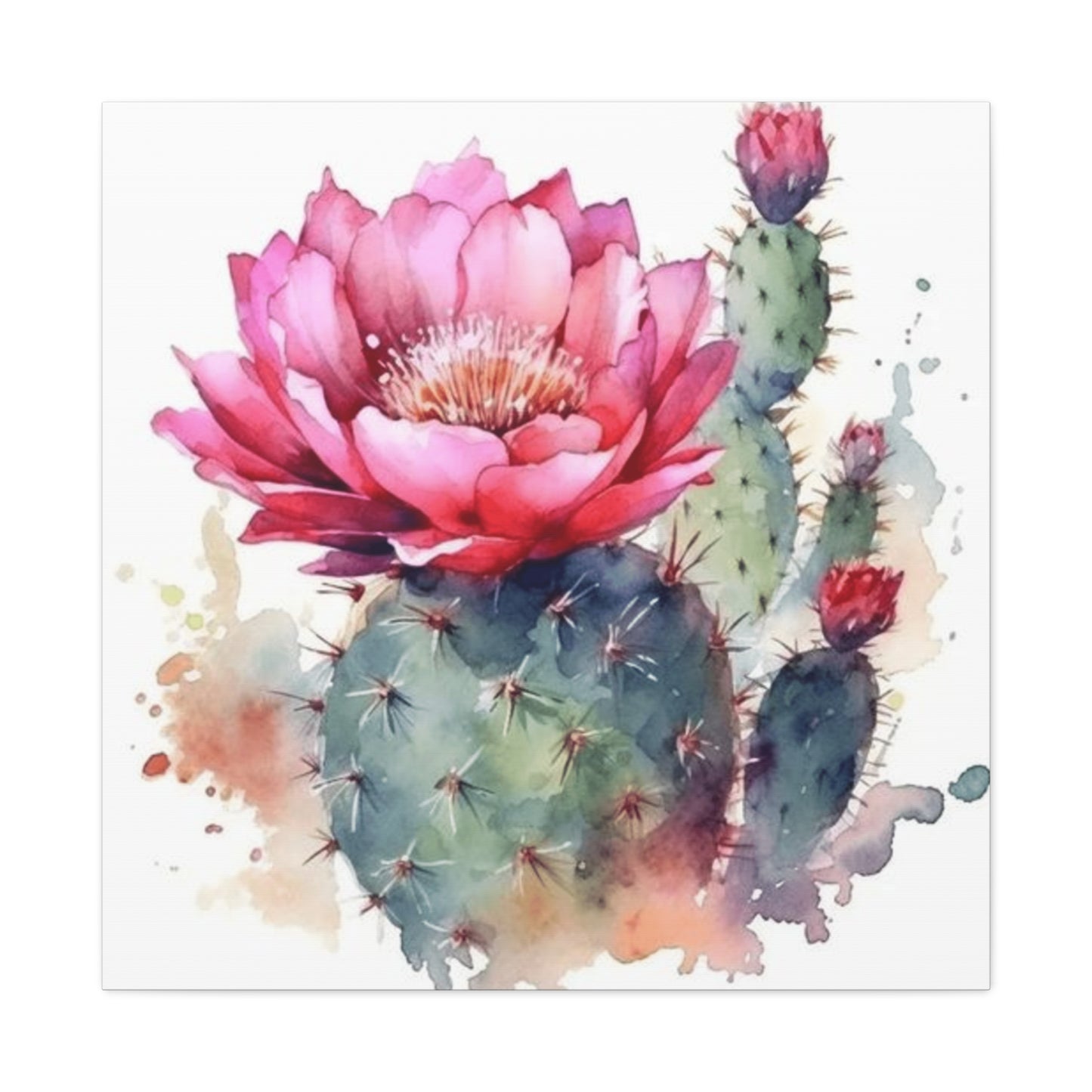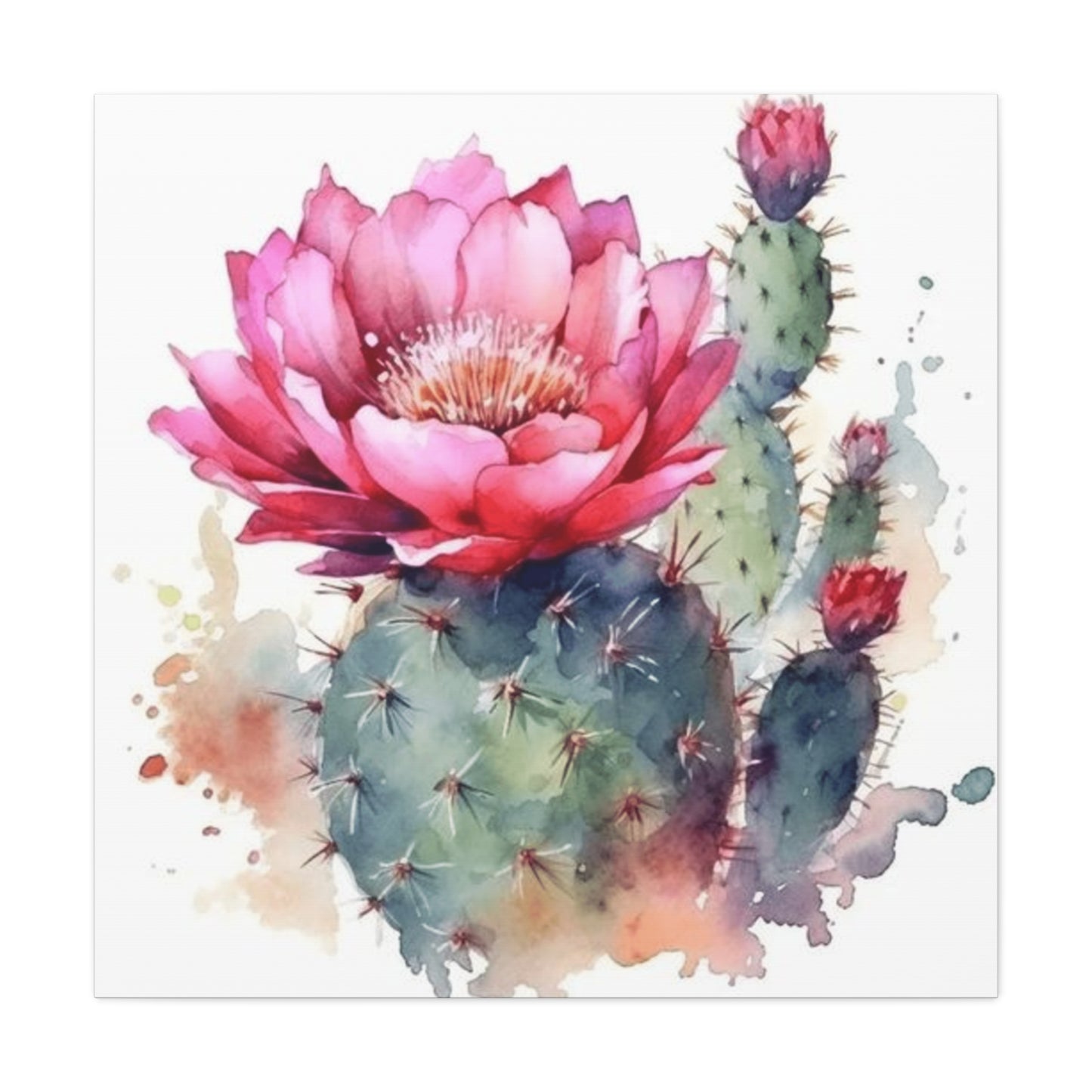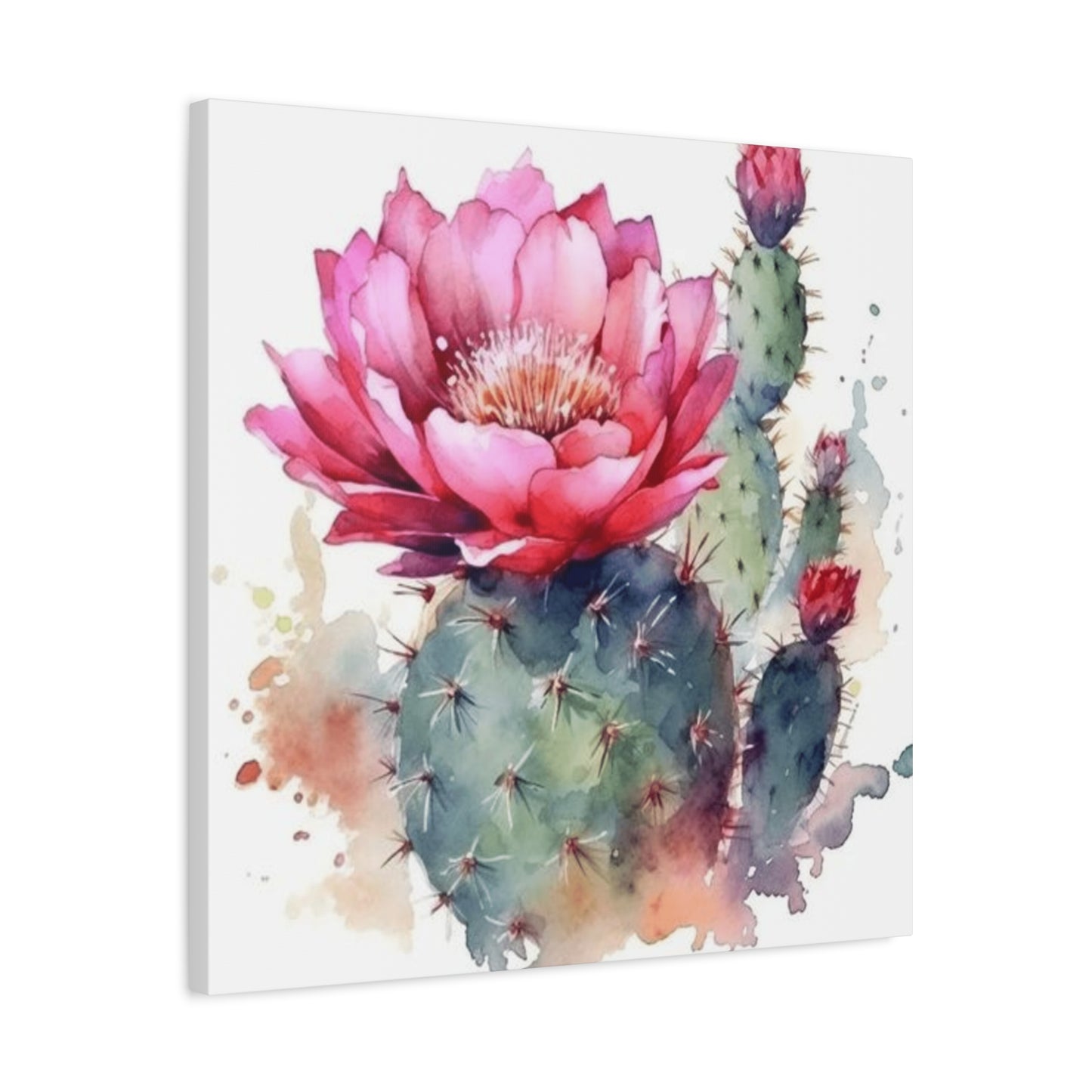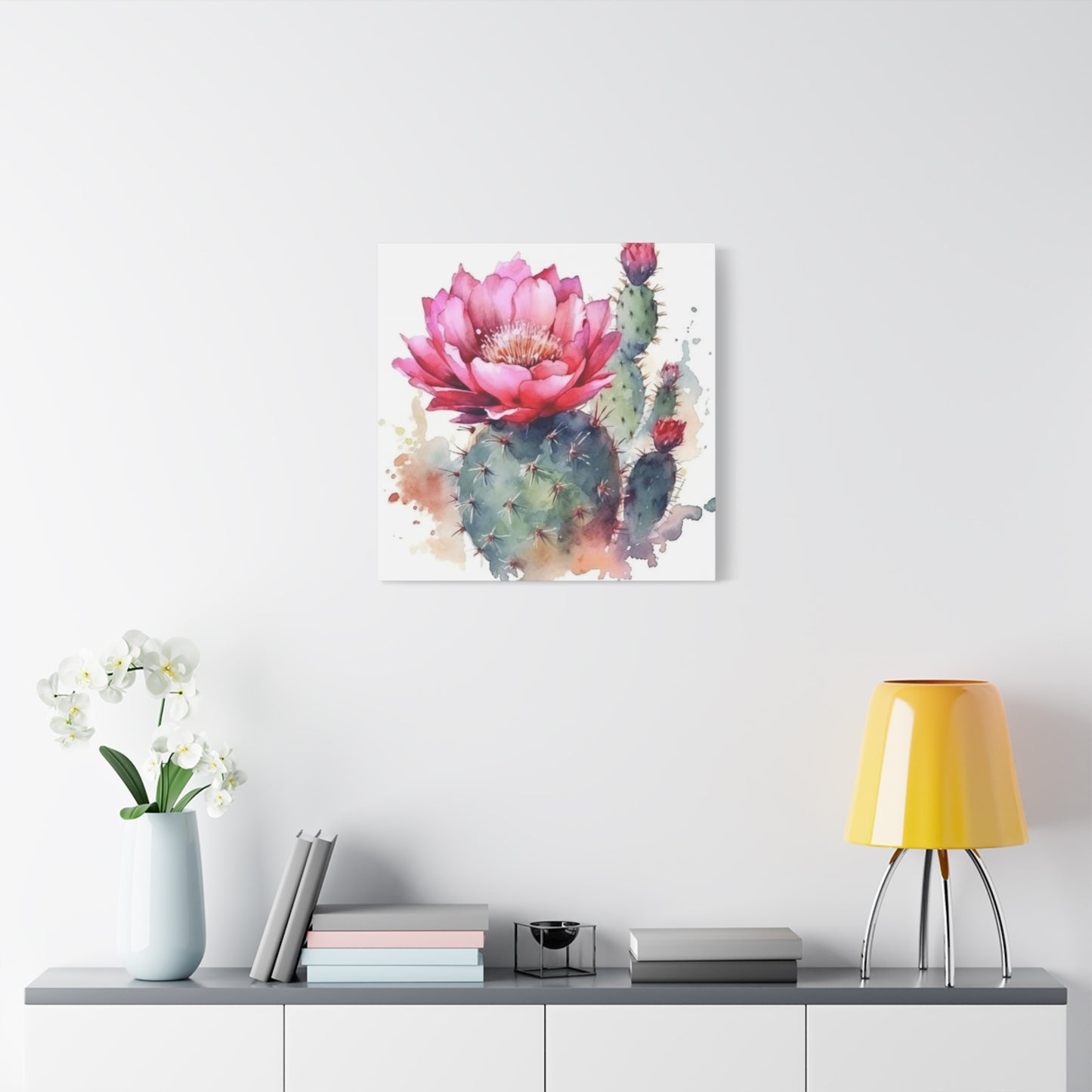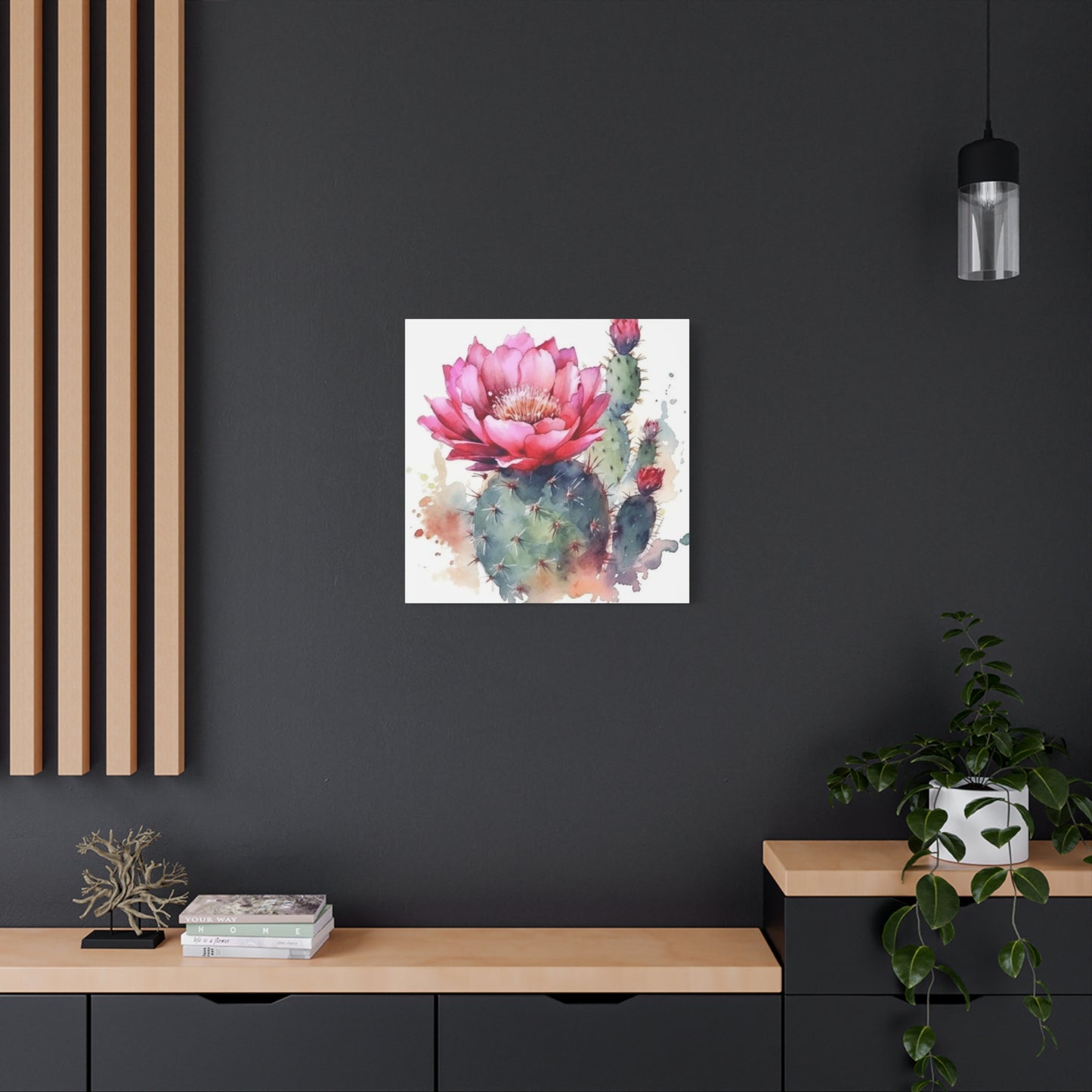Cactus Wall Art: Your Path to Desert-Inspired Interior Design Excellence
Creating a stunning interior space with desert-themed artwork has become increasingly popular among homeowners and interior designers alike. The appeal of succulent and prickly plant imagery brings a unique combination of natural beauty, modern aesthetics, and southwestern charm to any living environment. This comprehensive exploration will guide you through every aspect of incorporating desert plant artwork into your home, from selecting the perfect pieces to implementing professional hanging techniques.
Exceptional Desert Plant Artwork for Contemporary Living Spaces
Modern homes benefit tremendously from the incorporation of desert plant wall decorations, as these pieces offer a perfect balance between natural elements and sleek contemporary design. The clean lines and geometric shapes inherent in desert flora complement minimalist architectural features while adding organic warmth to sterile environments. Contemporary living spaces often feature neutral color palettes, making them ideal canvases for the rich greens, earth tones, and vibrant blooms commonly found in desert plant artwork.
When selecting desert plant wall art for modern homes, consider the scale of your space and the existing architectural elements. Large, open floor plans can accommodate oversized statement pieces that serve as focal points, while smaller rooms benefit from carefully curated collections of medium-sized prints. The key lies in understanding how these natural motifs interact with your furniture, lighting, and overall design scheme.
The versatility of desert plant imagery allows it to work seamlessly with various modern design styles, from Scandinavian minimalism to industrial chic. In Scandinavian-inspired spaces, simple line drawings of desert plants on white backgrounds complement the clean, uncluttered aesthetic. Industrial settings can accommodate more robust pieces, such as metal sculptures or large canvas prints with bold, dramatic imagery.
Consider the psychological impact of desert plant artwork in your modern home. These pieces evoke feelings of tranquility, resilience, and connection to nature, making them particularly valuable in urban environments where natural elements may be scarce. The presence of such artwork can transform a cold, contemporary space into a warm, inviting sanctuary that promotes relaxation and mental well-being.
Material selection plays a crucial role in successfully integrating desert plant art into modern homes. High-quality canvas prints offer durability and professional appearance, while framed photographs provide crisp detail and sophisticated presentation. Metal prints create striking contemporary displays with their vibrant colors and sleek finish, making them particularly suitable for modern kitchen and bathroom spaces.
Lighting considerations are essential when displaying desert plant artwork in contemporary homes. Natural light enhances the organic qualities of these pieces, while strategic artificial lighting can create dramatic effects and highlight specific details. LED picture lights or track lighting systems allow for precise illumination control, ensuring your desert plant art remains a stunning focal point throughout the day and evening hours.
Creative Approaches to Incorporating Desert Flora Prints in Interior Design
The art of decorating with desert flora prints requires a thoughtful approach that considers color harmony, spatial relationships, and thematic consistency throughout your living space. Successful integration of these natural motifs depends on understanding how to balance their organic qualities with existing architectural and decorative elements. The process begins with careful assessment of your current color scheme and identification of opportunities where desert plant imagery can enhance rather than compete with existing design elements.
Color coordination forms the foundation of effective desert plant print decoration. These artworks typically feature earthy greens, warm terra cottas, soft pinks, and neutral beiges that can either complement or contrast with your existing palette. In rooms dominated by cool tones, desert plant prints with warm undertones create visual interest and balance. Conversely, spaces featuring warm color schemes can benefit from prints emphasizing the cooler green tones found in various desert plants.
Scale and proportion considerations are paramount when incorporating desert flora prints into your decorative scheme. Large walls can accommodate oversized prints or gallery walls featuring multiple smaller pieces, while intimate spaces benefit from carefully selected individual artworks that don't overwhelm the environment. The key lies in maintaining visual balance while ensuring each piece contributes meaningfully to the overall aesthetic.
Seasonal decorating with desert plant prints offers flexibility and keeps your interior design fresh throughout the year. During spring and summer months, emphasize prints featuring blooming desert plants with vibrant flowers and bright green foliage. Fall and winter seasons call for artwork highlighting the more subdued, architectural qualities of desert flora, such as the geometric patterns of barrel cacti or the elegant silhouettes of century plants.
Textural variety enhances the impact of desert plant print displays. Combine smooth canvas prints with textured fabric pieces, or pair sleek metal prints with rustic wooden frames. This approach creates visual depth and prevents the display from appearing flat or monotonous. Consider incorporating three-dimensional elements, such as small sculptures or dried plant specimens, to bridge the gap between two-dimensional artwork and living plants.
Room-specific decorating strategies maximize the impact of desert plant prints throughout your home. In bedrooms, choose calming pieces with soft colors and gentle compositions that promote relaxation. Living rooms can accommodate more dynamic artwork with bold colors and dramatic compositions that serve as conversation starters. Kitchen and dining areas benefit from prints featuring edible desert plants or herb-like species that connect with the culinary function of these spaces.
The psychological impact of desert plant print placement should not be overlooked. Position calming, symmetrical compositions in areas designated for relaxation, while more dynamic, asymmetrical pieces work well in active social spaces. Understanding the emotional response evoked by different types of desert plant imagery allows for more intentional and effective decorating choices.
Innovative Do-It-Yourself Desert Plant Artwork Projects
Creating your own desert plant wall art offers unlimited creative possibilities while providing the satisfaction of displaying personally crafted pieces in your home. DIY projects allow for complete customization of size, color, style, and materials to perfectly match your existing decor and personal aesthetic preferences. The process of creating handmade artwork also provides therapeutic benefits and can become an enjoyable hobby that continues evolving with your artistic skills and design needs.
Photography-based DIY projects represent one of the most accessible approaches to creating custom desert plant artwork. With a digital camera or smartphone, you can capture stunning images of desert plants in botanical gardens, during desert travels, or even of potted specimens in your own home. The editing process allows for creative manipulation of colors, contrast, and composition to achieve the exact aesthetic you envision for your space.
Painting and drawing techniques offer traditional approaches to DIY desert plant art creation. Watercolor paintings capture the delicate, ethereal qualities of desert blooms and the subtle color variations found in plant foliage. Acrylic paints provide more vibrant, opaque coverage suitable for bold, contemporary interpretations. Pencil and charcoal drawings emphasize the architectural qualities and intricate details of desert plant structures.
Mixed media projects combine various materials and techniques to create unique, textured artworks that add dimensional interest to wall displays. Incorporate fabric pieces, pressed plant materials, sand, or small stones to create tactile elements that enhance the desert theme. Collage techniques using magazine clippings, decorative papers, or printed botanical illustrations can produce eclectic, layered compositions with rich visual complexity.
Digital art creation has become increasingly accessible with user-friendly software and online tools. Create vector illustrations of desert plants with clean, modern lines perfect for contemporary spaces. Digital photography manipulation allows for artistic effects such as selective coloring, HDR processing, or abstract interpretations that transform ordinary plant photographs into striking contemporary art pieces.
Textile-based DIY projects include embroidery, quilting, or fabric painting techniques that create soft, tactile wall hangings with desert plant themes. These approaches work particularly well in bedrooms, nurseries, or casual living areas where softer decorative elements are preferred. Hand-stitched details add personal charm and artisanal quality that mass-produced prints cannot replicate.
Three-dimensional DIY projects expand beyond traditional flat wall art to include sculptural elements. Wire sculpture techniques can create delicate desert plant silhouettes that cast interesting shadows on walls. Papier-mâché or clay modeling allows for creation of relief sculptures or freestanding pieces that complement flat artwork in gallery-style displays.
Current Movement Patterns in Desert Plant Wall Decoration
The world of desert plant wall decoration continues evolving with emerging trends that reflect broader movements in interior design, environmental consciousness, and artistic expression. Understanding these trends helps homeowners make informed decisions about incorporating desert plant artwork that will remain stylistically relevant and personally satisfying for years to come. Current trends emphasize sustainability, authenticity, and connection to natural environments while embracing technological advances in printing and display methods.
Sustainable and eco-conscious art practices have gained significant momentum, with consumers increasingly seeking artwork created using environmentally responsible methods and materials. This trend includes prints made with soy-based inks on recycled papers, frames crafted from reclaimed wood, and support for artists who donate portions of their proceeds to desert conservation efforts. The authenticity movement values original photography and artwork over mass-produced prints, driving demand for limited edition pieces and locally created artwork.
Maximalist desert plant displays have emerged as a counter-trend to minimalist approaches, featuring dense collections of varied artwork covering entire wall surfaces. These installations create immersive environments that transport viewers to desert landscapes through visual abundance. Gallery walls featuring dozens of small to medium-sized desert plant prints, arranged in organic, flowing compositions, exemplify this trend and work particularly well in spaces with high ceilings and ample wall space.
Technological integration in desert plant wall art includes interactive digital displays, LED-lit frames, and augmented reality features that enhance traditional static artwork. Smart frames that rotate through collections of desert plant images provide variety without requiring physical space for multiple pieces. App-controlled LED backlighting systems allow for dramatic mood lighting effects that transform the appearance of artwork throughout the day.
Biophilic design principles increasingly influence desert plant wall art selection and placement, emphasizing the human need for connection with natural environments. This trend prioritizes artwork that accurately represents natural desert ecosystems and promotes understanding of plant biology and ecology. Educational elements, such as species identification labels or information about desert conservation, enhance the biophilic impact of artwork displays.
Color trend evolution affects desert plant artwork preferences, with recent shifts toward deeper, more saturated earth tones replacing the pale, washed-out pastels popular in previous years. Rich terracotta, deep sage green, and warm amber tones reflect a desire for more grounding, substantial color palettes that create cozy, enveloping environments. Monochromatic treatments featuring various shades of a single color create sophisticated, cohesive displays.
Texture emphasis in contemporary desert plant wall art incorporates raised elements, mixed media combinations, and unusual printing surfaces that engage multiple senses. Canvas prints with applied sand or grit create tactile surfaces reminiscent of desert environments. Fabric wall hangings, woven pieces, and embroidered artworks add softness and warmth to balance the sometimes harsh visual elements of desert plant imagery.
Incorporating Watercolor Desert Plant Artwork in Residential Settings
Watercolor desert plant artwork brings a unique combination of delicate beauty and natural authenticity to home environments, offering softer alternatives to bold photographic or digital prints. The transparent, flowing qualities inherent in watercolor techniques perfectly capture the ethereal nature of desert blooms and the subtle color variations found in succulent foliage. This artistic medium creates a sense of movement and lightness that can transform heavy or somber interior spaces into bright, uplifting environments.
The selection process for watercolor desert plant art requires attention to color intensity, composition style, and paper quality to ensure pieces complement existing decor while maintaining their artistic integrity over time. High-quality watercolor papers resist fading and maintain crisp detail reproduction, making them essential for pieces intended as long-term decorative investments. Consider the artist's technique and style, as watercolor approaches range from highly realistic botanical illustrations to loose, impressionistic interpretations.
Placement strategies for watercolor desert plant artwork take advantage of the medium's light, airy qualities to brighten spaces and create focal points without overwhelming rooms. These pieces work exceptionally well in areas with abundant natural light, where the translucent qualities of watercolor can be fully appreciated. However, direct sunlight exposure should be avoided to prevent fading and color degradation over time.
Room-specific applications maximize the impact of watercolor desert plant art throughout the home. In bathrooms, the moisture-resistant properties of properly framed watercolor prints make them suitable choices, while their soft, spa-like aesthetic enhances relaxation. Bedroom installations benefit from the calming, dreamy qualities of watercolor techniques, particularly when featuring desert plants in soft, muted color palettes.
Framing and preservation considerations are crucial for watercolor desert plant artwork longevity and presentation quality. Acid-free matting materials prevent discoloration and deterioration, while UV-protective glass shields delicate pigments from harmful light exposure. Professional framing services ensure proper mounting techniques that prevent warping and maintain flat presentation surfaces.
Seasonal rotation strategies keep watercolor desert plant displays fresh and engaging throughout the year. Spring collections might emphasize blooming desert plants with vibrant flower colors, while summer displays could focus on lush, green foliage scenes. Fall and winter rotations can highlight the more architectural, structural aspects of desert plants, creating sophisticated displays that complement cooler weather aesthetics.
Collecting authentic watercolor desert plant artwork involves researching artists who specialize in botanical subjects and have direct experience with desert environments. Original paintings offer unique investment potential and personal satisfaction, while high-quality reproductions provide accessibility to exceptional artwork at various price points. Consider supporting local artists or those involved in desert conservation efforts to add meaningful stories to your collection.
Streamlined Desert Plant Wall Art Approaches for Clean Aesthetic Appeal
Minimalist desert plant wall art represents the perfect marriage between natural organic forms and clean, uncluttered design principles that characterize contemporary minimalist interiors. This approach emphasizes simplicity, negative space, and careful selection of impactful pieces that enhance rather than compete with the surrounding environment. The inherent geometric qualities found in many desert plants align naturally with minimalist design values, creating harmonious displays that feel both modern and timeless.
Selection criteria for minimalist desert plant artwork prioritize pieces with clean lines, limited color palettes, and simple compositions that make strong visual statements without overwhelming the space. Black and white photography of desert plants creates striking minimalist displays, emphasizing form and texture while eliminating color distractions. Line drawings and simple illustrations reduce complex plant forms to their essential elements, creating artwork that complements sparse furnishing and clean architectural lines.
Compositional principles in minimalist desert plant displays rely on the power of individual pieces to create impact through isolation and careful placement. Single, large-scale artworks often prove more effective than multiple smaller pieces in achieving the clean, uncluttered appearance valued in minimalist design. When multiple pieces are used, they should share consistent styling, framing, and spacing to maintain visual coherence and prevent the display from appearing busy or chaotic.
Color restrictions in minimalist desert plant art typically involve monochromatic schemes or very limited color palettes that complement the neutral backgrounds common in minimalist interiors. Subtle variations within a single color family create depth and interest without violating minimalist principles. The natural greens found in desert plants work particularly well against white, gray, or beige wall surfaces, providing just enough color contrast to create visual interest.
Framing approaches for minimalist desert plant artwork emphasize simple, clean lines that don't compete with the artwork itself. Thin metal frames in black, white, or natural wood tones maintain the clean aesthetic while providing necessary structure and protection. Frameless mounting systems create floating appearances that enhance the modern, minimal look while keeping focus on the artwork content rather than decorative elements.
Spatial relationships in minimalist desert plant displays require careful consideration of negative space and visual balance. Pieces should have adequate breathing room around them to maintain the uncluttered appearance essential to minimalist design. Wall space between artworks becomes as important as the artwork itself, creating rhythm and preventing the display from appearing cramped or overwhelming.
Lighting design for minimalist desert plant artwork should be clean and unobtrusive, focusing attention on the artwork without introducing visual clutter through elaborate fixtures. Recessed lighting or simple track systems provide adequate illumination while maintaining the clean lines valued in minimalist environments. Natural light should be maximized whenever possible, as it enhances the organic qualities of desert plant imagery while supporting the connection to nature valued in minimalist philosophy.
Desert Plant Artwork Options for Every Home
Creating beautiful desert plant wall displays doesn't require substantial financial investment when approached with creativity and strategic shopping techniques. Numerous affordable options provide access to high-quality desert plant artwork that enhances interior spaces without straining household budgets. The key lies in understanding where to find quality pieces at reasonable prices and how to maximize impact through thoughtful selection and arrangement.
Print-on-demand services offer exceptional value for custom desert plant artwork, allowing access to thousands of designs at affordable prices with various size and material options. These platforms often feature work by independent artists worldwide, providing unique pieces unavailable through traditional retail channels. Quality considerations include paper weight, ink quality, and color accuracy, with many services offering samples or guarantees to ensure customer satisfaction.
Thrift store and secondhand shopping can yield surprising discoveries in desert plant artwork, particularly in areas with active artistic communities or retirement populations. Estate sales and garage sales often feature original artwork, vintage prints, and unique pieces at fraction of retail prices. The treasure hunt aspect of secondhand shopping adds excitement to the collection process while providing opportunities to find truly unique pieces with interesting histories.
Digital download options provide immediate access to printable desert plant artwork at extremely affordable prices. High-resolution files can be printed at local copy centers or home printers, allowing for size customization and material experimentation. This approach works particularly well for creating gallery walls or temporary displays that can be easily updated as tastes evolve or seasons change.
DIY frame alternatives reduce costs while adding personal creativity to desert plant displays. Thrift store frame renovation projects transform outdated frames into custom pieces perfectly suited to your aesthetic preferences. Alternative hanging methods, such as clipboards, clotheslines, or magnetic systems, create casual, changeable displays that work well with budget-friendly printing options.
Seasonal sales and clearance events provide opportunities to acquire higher-end desert plant artwork at reduced prices. End-of-season sales, holiday promotions, and store closing events often feature significant discounts on framed prints and original artwork. Building relationships with local gallery owners and artists can provide advance notice of sales and special pricing opportunities.
Group purchasing and art swaps with friends or family members can extend buying power and provide access to variety without individual expense. Organizing artwork exchanges allows for rotating displays and discovering new artists and styles. Community art events, such as local art fairs or student exhibitions, often feature emerging artists with affordable pricing and unique perspectives on desert plant subjects.
Professional Techniques for Presenting Desert Plant Artwork
Proper framing and presentation techniques significantly impact the visual effectiveness and longevity of desert plant artwork, transforming simple prints into sophisticated decorative elements worthy of gallery-quality display. Professional framing involves multiple considerations including material selection, sizing, matting, and protection methods that preserve artwork while enhancing its aesthetic appeal. Understanding these techniques allows homeowners to achieve museum-quality results that elevate their interior design efforts.
Frame selection requires balancing aesthetic preferences with protective functions and longevity considerations. High-quality frames made from solid wood or metal provide superior durability and professional appearance compared to cheaper alternatives that may warp, break, or deteriorate over time. The frame style should complement both the artwork and surrounding decor without competing for visual attention or overwhelming the piece itself.
Matting techniques create visual breathing room around artwork while providing protective barriers between the piece and frame glass. Acid-free matting materials prevent chemical reactions that can cause discoloration or deterioration over time. Color selection for matting should enhance the artwork without competing with it, with neutral tones typically providing the most versatile and timeless appearance. Multiple mat layers create depth and sophistication in presentation.
Glass selection impacts both protection and visual quality of framed desert plant artwork. Regular glass provides basic protection at affordable prices, while UV-filtering glass prevents fading and color degradation from harmful light exposure. Museum-quality glass eliminates reflections and provides maximum protection, though at higher cost. Acrylic alternatives offer lightweight options with impact resistance for high-traffic areas or children's rooms.
Mounting techniques ensure flat, secure positioning of artwork within frames while preventing damage from humidity changes or handling. Hinge mounting allows artwork to expand and contract naturally, preventing warping or buckling. Dry mounting provides permanent adhesion for pieces that don't require future removal, while corner mounts offer secure positioning without adhering to the artwork itself.
Professional installation techniques ensure secure mounting while preventing wall damage and allowing for future repositioning. Wall stud location, proper hardware selection, and weight distribution considerations prevent failures that could damage both artwork and wall surfaces. Hanging height guidelines create optimal viewing angles while maintaining proportion with surrounding furniture and architectural elements.
Conservation considerations for valuable or sentimental desert plant artwork include environmental controls, handling procedures, and long-term storage solutions. Stable temperature and humidity levels prevent expansion, contraction, and moisture damage. Proper handling techniques minimize fingerprint contamination and physical damage during installation or relocation. Archival storage materials protect pieces during temporary storage or transportation.
Desert Plant Artwork Applications for Main Living Areas
Living room spaces provide ideal settings for showcasing desert plant wall art, offering large wall surfaces and central location that maximize visual impact and viewing opportunities. The social nature of living rooms makes them perfect venues for conversation-starting artwork that reflects personal style and creates welcoming atmospheres for guests. Desert plant artwork in living rooms can serve as focal points, complement existing color schemes, or introduce natural elements that balance modern furnishing and technological devices.
Scale considerations for living room desert plant artwork depend on ceiling height, wall space, and furniture proportions to create balanced, harmonious displays. Large walls can accommodate oversized statement pieces that anchor seating areas and create dramatic focal points. Multiple smaller pieces arranged in gallery wall configurations work well above sofas, console tables, or in areas where furniture placement prevents use of single large artworks.
Color coordination with existing living room elements ensures desert plant artwork enhances rather than conflicts with established design schemes. Neutral-toned artwork provides flexibility for seasonal decorating changes and furniture updates, while pieces featuring accent colors can tie together disparate elements in eclectic decorating schemes. Consider the color temperature of lighting in the room, as warm or cool lighting affects how artwork colors appear throughout the day.
Placement strategies maximize visual impact while maintaining functional flow in living room environments. Artwork positioned at eye level when seated provides optimal viewing angles for the primary furniture arrangement. Consider sight lines from multiple seating positions to ensure artwork remains visible and impactful from various vantage points throughout the room.
Seasonal adaptation allows living room desert plant displays to evolve with changing decorating themes and personal preferences. Interchangeable artwork systems, such as picture ledges or gallery hanging systems, facilitate easy updating without wall damage. Seasonal color shifts in accent pillows, throws, and accessories can be echoed in temporary artwork changes that keep the space fresh and engaging.
Integration with other decorative elements creates cohesive living room designs where desert plant artwork feels naturally incorporated rather than arbitrarily added. Echo artwork colors in textile choices, coordinate frame finishes with furniture hardware, or complement artwork themes with live plants or decorative objects. This layered approach creates sophisticated, professionally designed appearances.
Lighting considerations enhance the impact of living room desert plant artwork while providing functional illumination for daily activities. Picture lights create focused illumination that highlights artwork details and creates dramatic evening ambiance. Natural light positioning takes advantage of window placement while avoiding direct sunlight that could cause fading or glare issues.
Southwestern Style Desert Plant Wall Decorations
Bohemian interior design philosophy embraces eclectic mixing, natural materials, and relaxed aesthetics that perfectly complement desert plant wall decorations. This style celebrates artistic expression, cultural diversity, and connection to natural environments, making desert plant imagery ideal for creating authentic boho-inspired spaces. The organic forms and earth-tone colors characteristic of desert plants align naturally with boho color palettes and decorating principles.
Layering techniques essential to boho style can be applied to desert plant wall displays through combining multiple artwork sizes, mixing different artistic mediums, and incorporating three-dimensional elements. Gallery walls featuring varied desert plant prints, photographs, and illustrations create rich visual tapestries characteristic of boho decorating. Adding textile elements, such as macrame plant hangers or woven wall hangings, enhances the layered, collected-over-time appearance valued in bohemian interiors.
Color palette integration for boho desert plant displays typically emphasizes warm earth tones, rich jewel tones, and metallic accents that reflect the diverse cultural influences characteristic of bohemian style. Terra cotta, deep sage, burnt orange, and golden yellow work particularly well with desert plant imagery while supporting the warm, inviting atmosphere valued in boho decorating. Metallic frames in brass, copper, or aged finishes add glamour and sophistication.
Textile integration creates the soft, comfortable atmosphere essential to successful boho decorating schemes. Desert plant artwork can be printed on fabric for unique wall hangings that add textural variety to displays. Combining traditional framed prints with embroidered pieces, quilted wall hangings, or printed tapestries creates the mixed-media approach characteristic of bohemian style.
Cultural authenticity in boho desert plant displays can be enhanced through selecting artwork that accurately represents specific desert regions and their indigenous plant species. Supporting artists from southwestern regions or those with direct desert experience adds authenticity and meaningful stories to collections. Including educational elements about desert ecology or indigenous plant uses enhances the cultural depth valued in bohemian decorating.
Furniture and accessory coordination with boho desert plant wall art emphasizes natural materials, vintage pieces, and globally inspired elements. Wooden furniture with natural finishes, rattan or wicker seating, and vintage leather pieces complement the organic themes in desert plant artwork. Moroccan-inspired textiles, Native American pottery, or vintage travel artifacts enhance the worldly, collected aesthetic.
Plant integration creates seamless connections between desert plant wall art and living botanical elements throughout boho-style spaces. Live succulents and cacti echo the themes in wall artwork while adding authentic natural elements. Hanging planters, floor-standing specimens, and tabletop arrangements create three-dimensional extensions of the desert plant theme that enhance the biophilic aspects of boho decorating.
Photographic Desert Plant Imagery for Interior Wall Displays
Photography offers unparalleled realism and detail in desert plant wall art, capturing the intricate textures, subtle color variations, and architectural qualities that make these plants fascinating subjects for interior decoration. High-quality photographic prints provide museum-level detail and color accuracy that allows viewers to appreciate aspects of desert plants not visible in other artistic mediums. The documentary nature of photography also supports educational and biophilic design goals by presenting accurate representations of natural desert environments.
Technical considerations for photographic desert plant wall art include resolution, color management, and printing processes that ensure optimal reproduction quality. High-resolution files capture fine details and allow for large-scale printing without pixelation or quality loss. Color management systems ensure accurate reproduction of the subtle color variations crucial to effective desert plant photography. Professional printing processes, such as giclée printing, provide archival quality and color stability over time.
Compositional styles in desert plant photography range from intimate macro details to sweeping landscape views that showcase plants in their natural environments. Close-up photography reveals texture details, growth patterns, and intricate structures not visible from normal viewing distances. Environmental portraits show plants in context, providing ecological information and creating more complete narratives about desert life and survival strategies.
Lighting considerations significantly impact the mood and aesthetic appeal of photographic desert plant wall art. Golden hour photography captures warm, dramatic lighting that emphasizes the sculptural qualities of desert plants while creating romantic, inviting atmospheres. Overcast lighting provides even illumination that reveals color details and subtle textures without harsh shadows. Artificial lighting techniques allow for creative effects and controlled conditions that support artistic vision.
Black and white photography of desert plants creates timeless, sophisticated artwork that works well in contemporary and traditional interior settings. Monochromatic treatments emphasize form, texture, and composition while eliminating color distractions. High contrast black and white images create dramatic impact, while softer tonal ranges produce elegant, subtle effects suitable for calm, contemplative spaces.
Series and collection approaches allow photographers to explore desert plant themes in depth while providing homeowners with coordinated artwork options. Botanical series featuring different species create educational displays with scientific value. Seasonal series document changes throughout growing cycles, while location-based series showcase the diversity of different desert regions.
Artistic manipulation and enhancement techniques transform documentary photography into expressive art pieces suitable for contemporary interior design. HDR processing reveals detail in both shadows and highlights, creating surreal, hyper-realistic effects. Color manipulation can emphasize particular aspects of plant appearance or create abstract interpretations. Composite techniques combine multiple images for creative effects not possible with straight photography.
Metallic Desert Plant Sculptural Wall Elements
Metal desert plant sculptures bring three-dimensional artistic elements to wall displays, creating dynamic shadows and textural variety that enhance the visual impact of traditional flat artwork. These sculptural pieces can serve as standalone statements or integrate with photographic and printed artwork to create rich, layered displays with museum-quality sophistication. The durability of metal sculptures makes them suitable for various environments, including outdoor patios and high-humidity bathrooms where paper-based artwork might deteriorate.
Material selection for metal desert plant sculptures affects both aesthetic appearance and longevity in different environmental conditions. Stainless steel provides corrosion resistance and contemporary appearance suitable for modern interiors. Copper develops natural patina over time, creating evolving artwork that changes character with age. Powder-coated finishes offer color options while providing weather protection for outdoor installations.
Fabrication techniques determine the level of detail and artistic expression possible in metal desert plant sculptures. Hand-forged pieces offer organic, artisanal qualities with unique character in each piece. Laser-cut designs provide precise detail and repeatability for contemporary, geometric interpretations. Welded assemblies allow for complex, large-scale pieces that create dramatic architectural impact.
Installation considerations for metal desert plant wall sculptures include weight distribution, wall mounting systems, and safety factors that ensure secure, long-term placement. Heavy pieces require locating wall studs and using appropriate hardware rated for the sculpture weight. Floating mount systems create dramatic shadow effects by positioning pieces away from wall surfaces. Lighting integration can enhance sculptural qualities through strategic shadow creation.
Size and scale relationships between metal sculptures and surrounding artwork require careful planning to create balanced, cohesive displays. Large sculptural pieces can serve as anchor points for arrangements of smaller flat artwork. Series of related sculptural pieces create rhythm and movement across wall surfaces. Consider viewing distances and angles to ensure sculptural details remain visible and impactful from primary seating areas.
Maintenance requirements for metal desert plant sculptures vary by material and finish but generally involve periodic cleaning and inspection for damage or deterioration. Stainless steel requires minimal maintenance beyond occasional cleaning with appropriate products. Painted finishes may require touch-up over time, particularly in high-traffic areas. Outdoor pieces need more frequent inspection and maintenance due to weather exposure.
Artistic styles in metal desert plant sculptures range from realistic botanical representations to abstract interpretations that emphasize geometric forms and modern design principles. Realistic sculptures capture specific plant characteristics and species identification, supporting educational goals. Abstract pieces focus on essential forms and create contemporary art statements that complement modern interior design approaches.
Large-Scale Desert Plant Artwork as Architectural Features
Statement-sized desert plant artwork transforms wall surfaces into architectural features that fundamentally alter the character and scale of interior spaces. These oversized pieces command attention and create focal points that anchor entire room designs around their presence. The impact of large-scale artwork extends beyond mere decoration to influence traffic patterns, furniture placement, and overall spatial perception within homes and offices.
Size determination for large-scale desert plant artwork requires careful measurement and proportion calculation to ensure pieces complement rather than overwhelm their intended spaces. The two-thirds rule suggests artwork should occupy approximately two-thirds of available wall space to create balanced proportions. However, this guideline can be adjusted based on ceiling height, furniture scale, and desired visual impact. Rooms with high ceilings can accommodate proportionally larger pieces without appearing overwhelming.
Production considerations for large-scale desert plant artwork include printing capabilities, material limitations, and installation requirements that differ significantly from standard-sized pieces. Large format printing requires specialized equipment and expertise to maintain resolution and color quality across extensive surfaces. Canvas stretching for oversized pieces requires professional techniques to prevent sagging or warping. Alternative materials, such as vinyl or fabric, may offer advantages for specific applications.
Installation challenges for statement-sized desert plant artwork involve weight considerations, mounting systems, and potential need for professional installation services. Heavy pieces require multiple mounting points and careful weight distribution to prevent wall damage. Modular systems allow large artwork to be broken into manageable sections for easier handling and installation. Professional installers have experience with proper techniques and safety procedures for oversized pieces.
Architectural integration ensures large-scale desert plant artwork enhances rather than conflicts with existing building features such as windows, doorways, and built-in elements. Artwork placement should complement natural traffic patterns and maintain clearance for functional elements. Consider how pieces interact with lighting fixtures, HVAC vents, and electrical outlets to create clean, professional installations.
Visual impact considerations for statement-sized artwork include viewing distances, color intensity, and compositional elements that work effectively at large scales. Images that appear busy or cluttered in small formats may work perfectly when enlarged, as increased size provides space for complex details to be appreciated. Simple, bold compositions often translate most effectively to large formats, creating maximum impact without overwhelming viewers.
Economic considerations for large-scale desert plant artwork include higher material costs, shipping expenses, and potential professional installation fees. However, the dramatic impact of statement pieces often provides better value than multiple smaller pieces in terms of decorative effect per dollar invested. Custom printing and framing options allow for budget management through material and finishing choices.
Desert Plant Artwork Applications in Professional Work Environments
Office spaces present unique opportunities and challenges for incorporating desert plant wall art, requiring consideration of professional appropriateness, maintenance requirements, and impact on workplace productivity and mood. The calming, natural qualities of desert plant imagery can help counteract the stress and sterility often associated with corporate environments while creating more welcoming, inspiring workspaces that support employee wellbeing and creative thinking.
Professional aesthetic requirements in office environments typically favor sophisticated, understated artwork that projects competence and reliability while avoiding controversial or distracting content. Desert plant photography and illustration generally meet these criteria, offering natural beauty without inflammatory or inappropriate subject matter. Clean, modern presentations with quality framing enhance professional credibility while supporting corporate branding and image goals.
Psychological benefits of desert plant artwork in offices include stress reduction, improved air quality perception, and enhanced connection to natural environments that support mental health and productivity. Research demonstrates that exposure to nature imagery, even in photograph form, can reduce cortisol levels and improve focus and creativity. The resilient, enduring qualities symbolized by desert plants can provide subtle inspiration and motivation for workplace challenges.
Placement strategies in office environments must accommodate workflow patterns, meeting requirements, and varying privacy needs throughout different work areas. Reception areas benefit from impressive statement pieces that create positive first impressions for visitors and clients. Individual offices can include personal artwork selections that reflect occupant preferences while maintaining professional standards. Conference rooms require artwork that supports productive meetings without causing distraction.
Maintenance considerations for office desert plant artwork include cleaning requirements, replacement planning, and damage prevention in high-traffic environments. Professional cleaning services should use appropriate materials that don't damage artwork or frames. Protective measures, such as acrylic glazing or strategic placement away from high-contact areas, prevent damage from normal office activities. Replacement planning ensures consistent aesthetic standards as pieces wear or become outdated.
Budget allocation for office desert plant artwork requires balancing aesthetic goals with financial constraints while considering long-term value and impact on workplace satisfaction. Group purchasing or bulk orders can reduce per-piece costs for larger installations. Leasing programs allow for periodic updates without large capital investments. Employee satisfaction surveys can help quantify the value of workplace art programs in terms of retention and productivity benefits.
Collaborative selection processes ensure office desert plant artwork reflects diverse preferences while maintaining cohesive aesthetic standards throughout professional environments. Employee input through surveys or committees can guide selection while maintaining management oversight of appropriateness and budget considerations. Professional design consultants can facilitate collaborative processes while ensuring technically sound installation and long-term satisfaction.
Conclusion
Cactus wall art stands as a vibrant gateway to achieving desert-inspired interior design excellence, effortlessly blending nature’s raw beauty with artistic expression. As an iconic symbol of resilience, simplicity, and striking form, the cactus lends itself perfectly to interiors that seek to evoke the calming, warm, and timeless atmosphere of the desert. Whether you’re aiming for a bold statement or a subtle accent, cactus-themed artwork brings character, texture, and an authentic touch of the Southwest into your home.
One of the defining strengths of cactus wall art lies in its incredible versatility. From minimalist black-and-white line drawings to vivid, colorful prints that mimic the desert’s fiery sunsets, cactus art can suit a wide range of interior styles—from modern and bohemian to rustic, southwestern, and even industrial. This adaptability makes it a valuable design element for anyone looking to infuse their space with natural inspiration without sacrificing their unique aesthetic. Additionally, cactus motifs can be expressed in various mediums including canvas prints, metal sculptures, macramé wall hangings, or digital art, each bringing a distinctive texture and mood to a room.
Beyond its aesthetic value, cactus wall art carries rich symbolism that deepens its impact within a living space. The cactus’s ability to thrive in harsh, arid conditions embodies endurance, self-reliance, and quiet strength. Displaying cactus art serves as a subtle reminder of these qualities, encouraging resilience and mindfulness in daily life. This emotional resonance adds a meaningful layer to your décor, transforming simple decoration into a source of inspiration and grounding.
Incorporating cactus art into your interior design does not require an extensive renovation. A single, well-chosen piece can transform a room by introducing warmth and a sense of place, connecting your indoor environment with the serene, natural landscapes of the desert. Pairing cactus wall art with complementary elements like warm wood tones, terracotta accents, woven textiles, and earthy color palettes further enhances the desert-inspired vibe, creating cohesive and inviting spaces.
For those who love personalization, cactus wall art also offers ample opportunity for creativity. DIY projects like hand-painting cactus motifs or assembling mixed-media collages allow you to craft unique pieces that reflect your style and connection to the desert. This creative engagement not only enriches your décor but also deepens your appreciation for the natural beauty that cactus art celebrates.
In summary, cactus wall art is more than just decoration—it is a path to interior design excellence that combines aesthetic appeal, symbolic depth, and versatility. By embracing cactus-inspired pieces, you invite the magic of the desert into your home, creating spaces that are both beautiful and meaningful, and truly reflective of nature’s quiet power.









